Effective and environmentally friendly: Weed removal with hot water
Dealing with weed in an effective manner is a constant challenge in municipalities and agriculture. There are chemical products for this purpose, but these are often environmentally harmful and their use in public spaces is limited. With hot water, dandelions, thistles and more can be removed without using herbicides. A gentle method without harming the environment or surfaces.
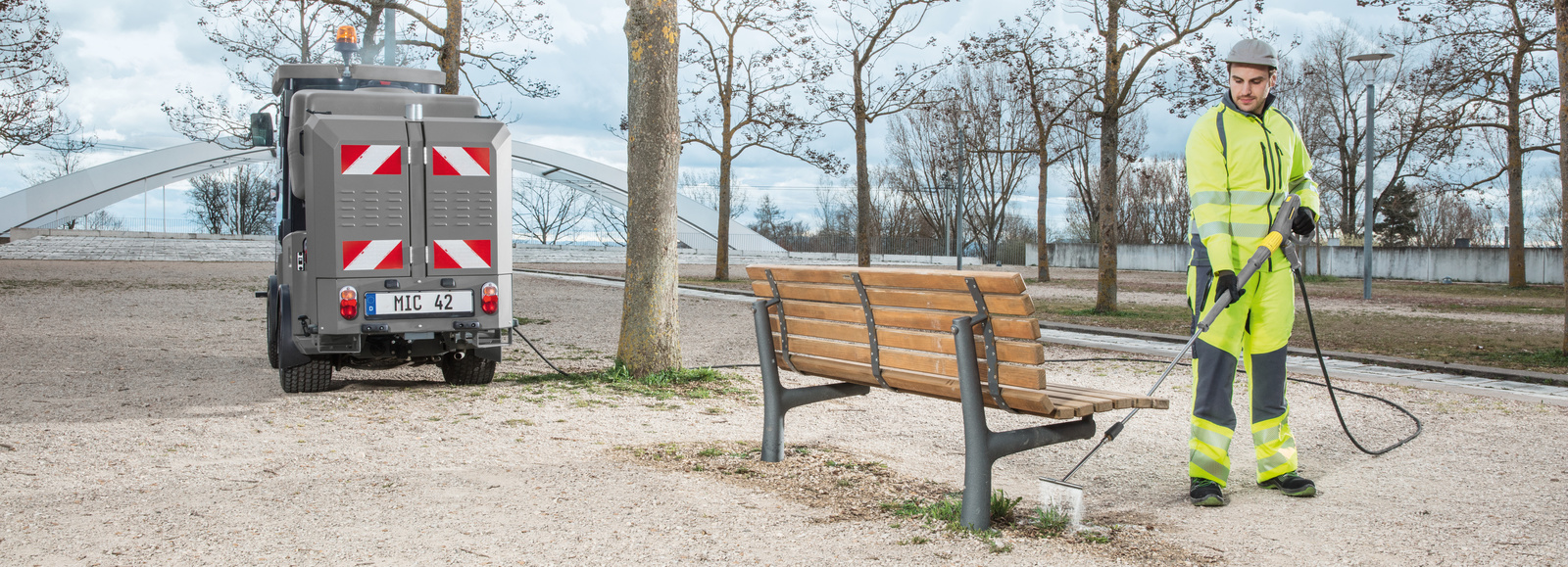
Reasons for weed removal
Unlike cultivated and ornamental plants, weeds are plants that grow naturally without any human intervention. There are lots of good reasons to remove weeds. In farming, you remove weeds to protect crops. In towns and cities, to keep public spaces clean and tidy and to prevent damage to roads, open spaces and buildings.
Many weeds can spread extremely quickly and/or cause severe damage with their roots. They also have a negative impact on the desired aesthetics.
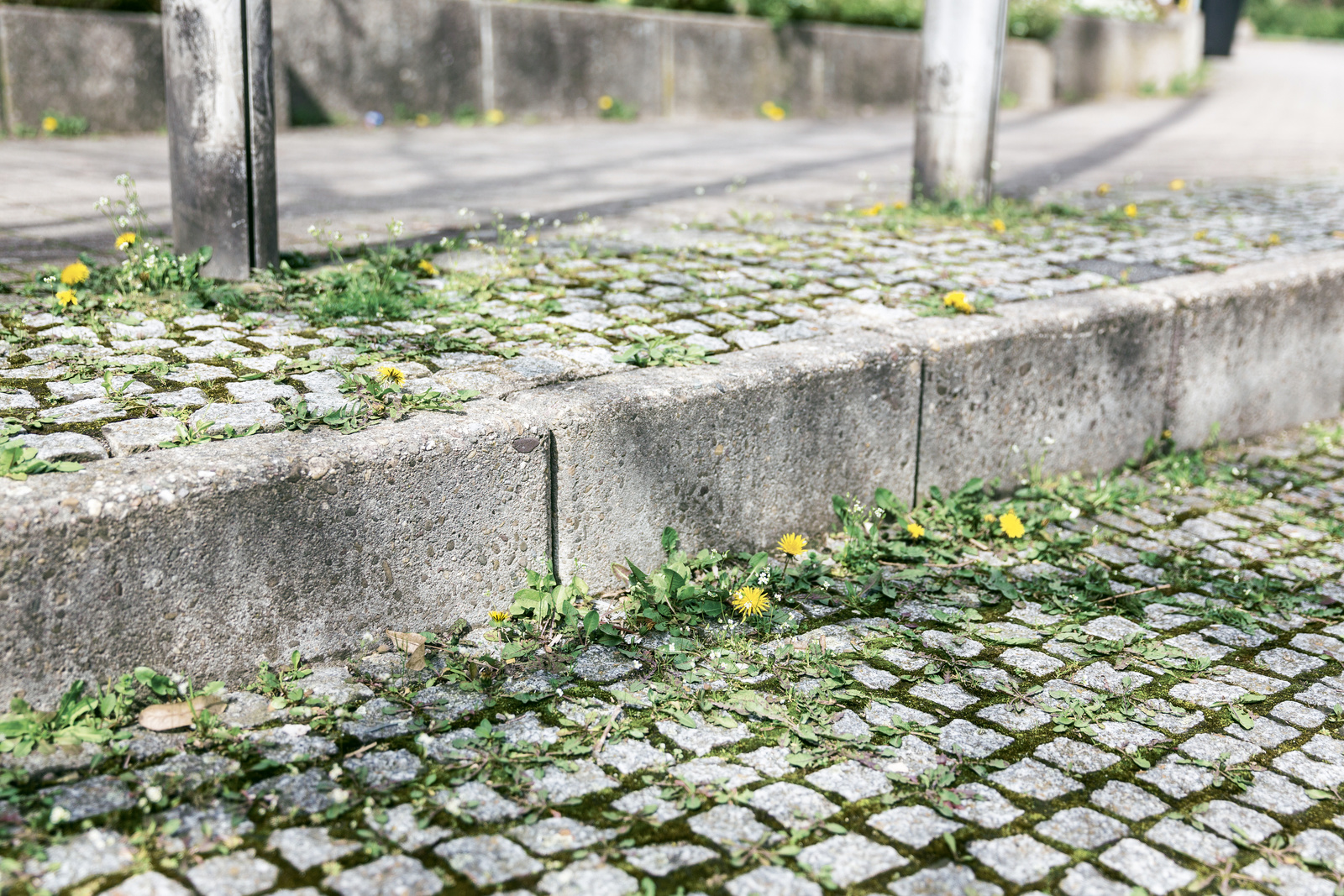
Treatment methods at a glance
Thermal, mechanical and chemical methods can be used to destroy weeds. They differ, inter alia, in terms of their environmental impact, sustainability and efficiency. An overview of the treatment methods:
Type of procedure
Hot water machines
thermal
Hot foam machines
thermal
Hot steam machines
thermal
Hot air machines
thermal
Flame devices
thermal
Weed brush
mechanical
Spray method
chemical
Properties
Hot water machines
Up to 98°C
Kill the parts of plants above ground and the roots below with hot water.
Hot foam machines
> 100°C
Steam machine with additional foam output. The foam is used for insulation purposes and is intended to prevent the steam from cooling too quickly.
Hot steam machines
> 100°C
Kill the parts of plants above ground. However, heat transfer from steam is not as effective as that from hot water. Roots are not effectively attacked.
Hot air machines
> 350°C
Kill weeds with intense heat from hot air.
Flame devices
> 400°C
The plants are heated by burning gas, causing them to die and in some cases burn.
Weed brush
Weed brushes and strimmers remove the plants from the roots.
Spray method
Herbicide is applied to the leaves using a spray unit.
Environmental impact
Hot water machines
low
Hot foam machines
moderate
Hot steam machines
low
Hot air machines
moderate
Flame devices
high
Weed brush
low
Spray method
very high
Effect
Hot water machines
Plants and roots are weakened and destroyed, including the seeds.
Hot foam machines
Plants are weakened and destroyed. Limited penetration.
Hot steam machines
Plants are weakened and destroyed. Limited penetration.
Hot air machines
Surface growth is destroyed. Limited penetration.
Flame devices
Surface growth is burned. Limited penetration.
Weed brush
The parts of plants above ground are removed using a steel brush.
Spray method
Herbicide weakens and destroys the cell structure of the plant down to the roots.
Noise exposure for users
Hot water machines
low
Hot foam machines
low
Hot steam machines
moderate
Hot air machines
moderate
Flame devices
high
Weed brush
moderate
Spray method
low
Special features
Hot water machines
Can be used on all surfaces, including critical and hard-to-reach areas.
Hot foam machines
Can be used on all surfaces, including critical and hard-to-reach areas.
Hot steam machines
Can be used on all surfaces, including critical and hard-to-reach areas.
Hot air machines
Ineffective in moist conditions.
Flame devices
Cannot be used in extremely dry conditions, ineffective in moist conditions.
Weed brush
Standard in public areas; achieves desired clean, smart look in towns and cities as the weeds are removed directly.
Spray method
Generally prohibited, may be used on paved and compacted areas only with special authorisation, certificate of expertise required.
Sustainability / effectiveness
Hot water machines
high
Hot foam machines
high
Hot steam machines
moderate
Hot air machines
low
Flame devices
low
Weed brush
moderate
Spray method
high
Application frequency
Hot water machines
Up to 4 applications in the first year, decreasing the following year.
Hot foam machines
Up to 4 applications in the first year, decreasing the following year.
Hot steam machines
4–6 applications.
Hot air machines
Application must be repeated about every 4 weeks.
Flame devices
Application must be repeated about every 4 weeks.
Weed brush
Application must be repeated about every 4 weeks.
Spray method
Up to 4 applications in the first year.
Overall assessment
Hot water machines
*****
Hot foam machines
**
Hot steam machines
***
Hot air machines
**
Flame devices
**
Weed brush
***
Spray method
**
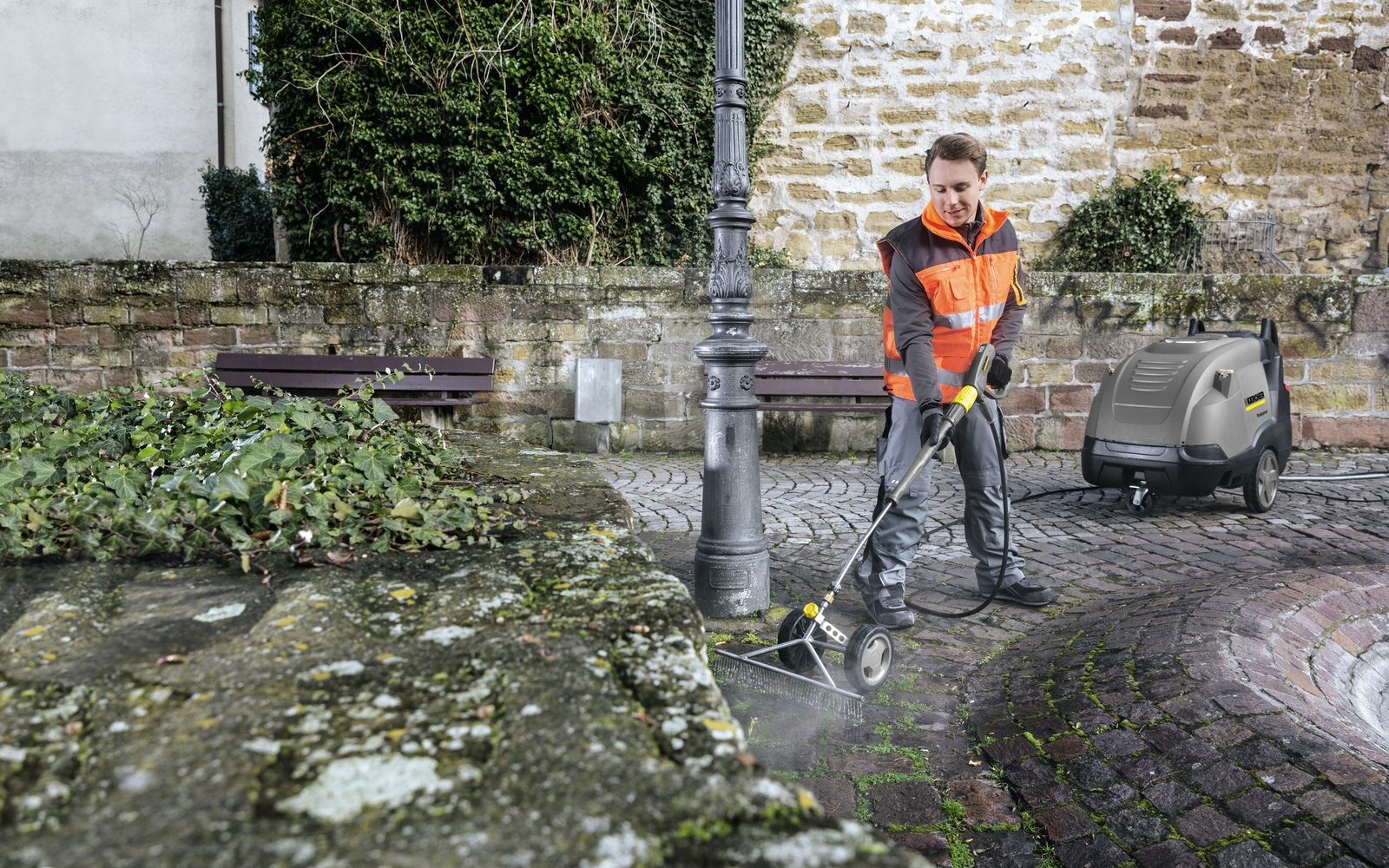
Weed removal with hot water
The overview of the treatment methods shows that weeds can be effectively removed using various thermal methods. The principle of thermal weed control is based on a fundamental biochemical rule: most proteins denature from a temperature of roughly 42°C. This means that the proteins change, break up and can no longer fulfil their functions.
The necessary heat can be generated and applied in a number of ways: directly as a flame or indirectly via thermal radiation, as hot water or steam. Hot water is the only chemical-free method that also reaches the roots. Even if the roots are not completely destroyed straightaway, the weed is further weakened with each hot water application. If you apply hot water regularly from the beginning, regrowth is hampered and the required application frequency will decrease considerably even in the second year. As a rule of thumb, three to four treatments are sufficient in a year.
Tip: Apply at the right time
The best time to remove weeds is in the afternoon. The amount of water stored by plants varies depending on the time of day. It is also best to start with the first hot water application shortly after the weeds have sprouted in spring. As plants get older, they become more resistant to hot water.
Use of hot water high-pressure cleaners
The temperature is decisive when removing weeds with hot water: The hotter the water, the more efficiently the plants can be destroyed. Hot water high-pressure cleaners can provide water at consistently high temperatures of up to 98°C, which is just below the steam threshold and therefore ideal.
The weed removers WR 10, WR 20, WR 50 and WR 100 are suitable as accessories. They vary in their working width and area performance – for a demand-oriented use depending on the area size.
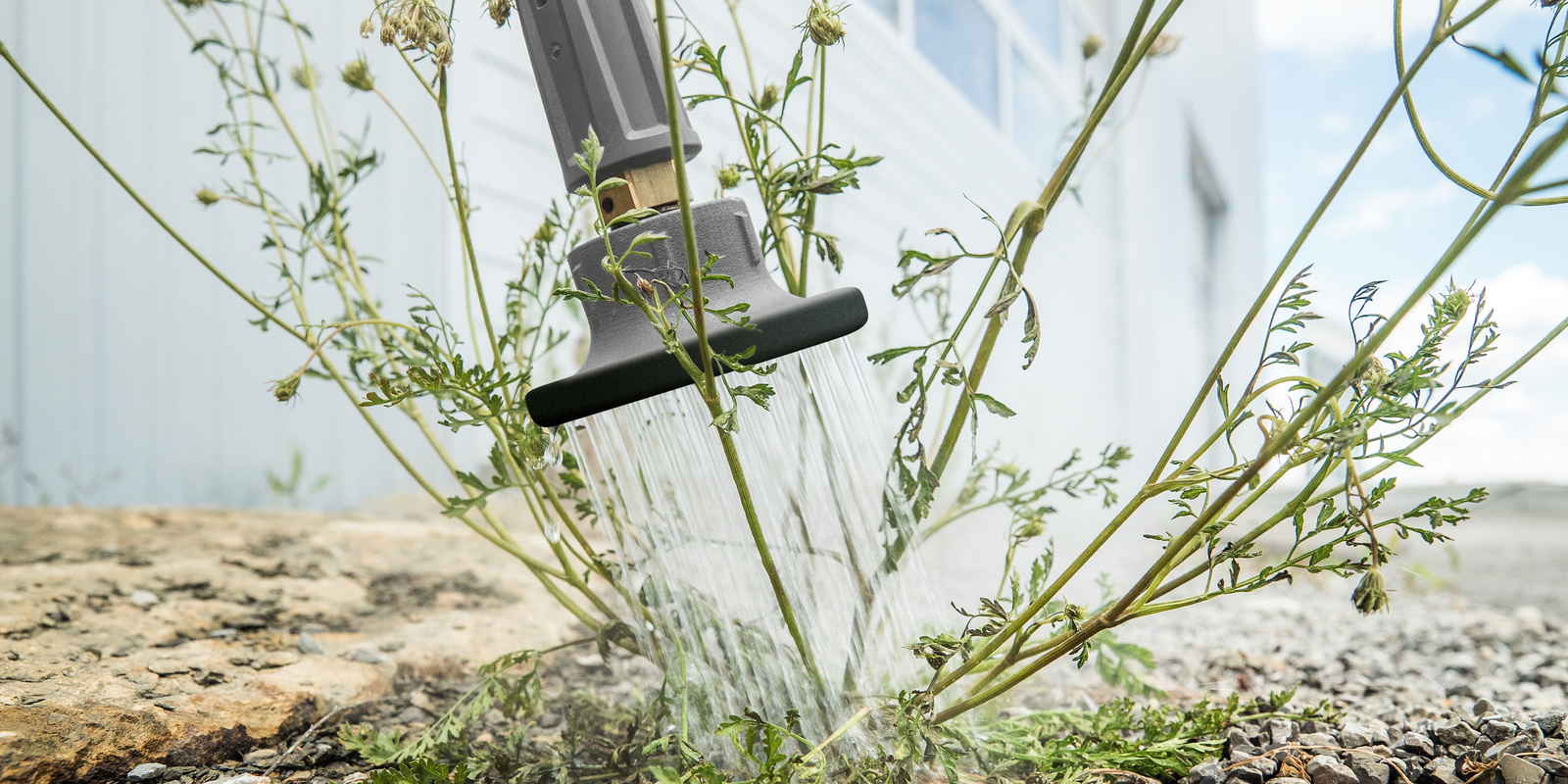
Weed remover WR 10 with 10 cm spray head and nozzle adapter. For an efficient weed removal also in confined spaces.
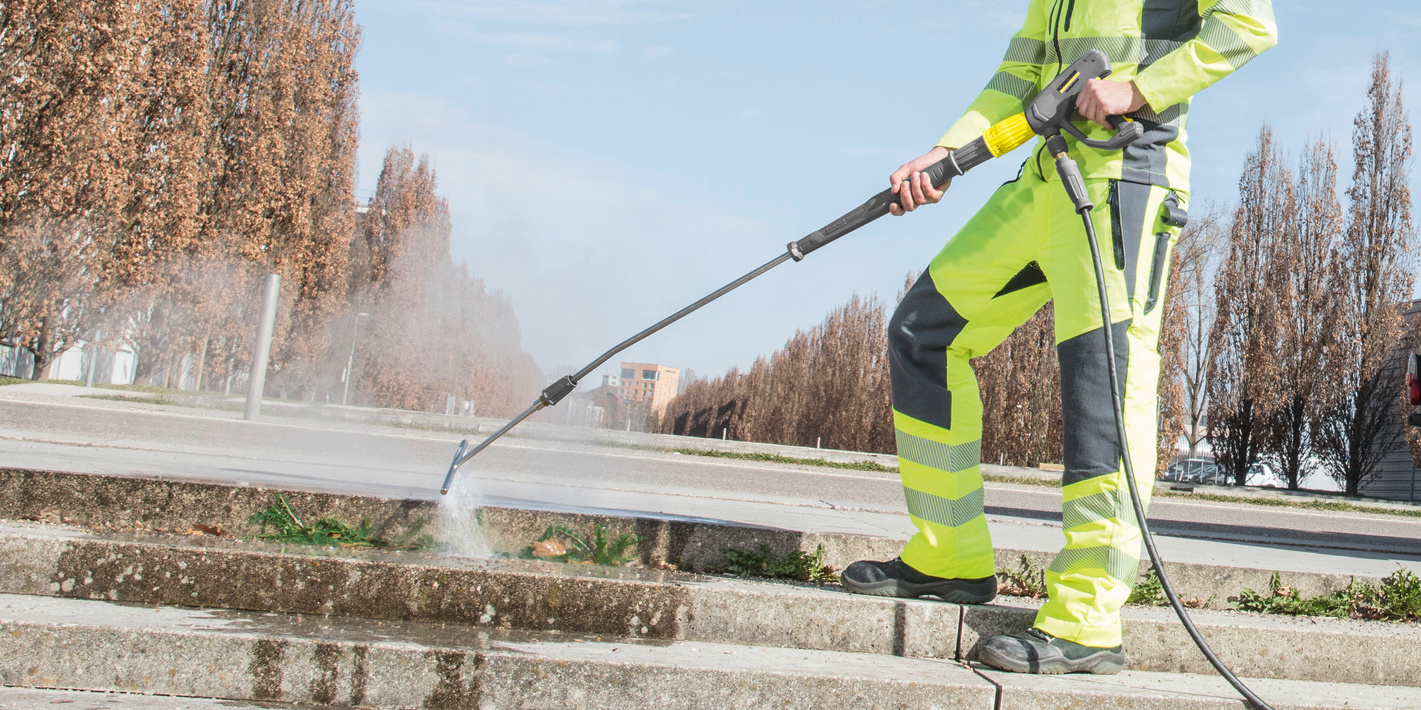
Weed remover WR 20 with a 20 cm wide nozzle bar and integrated nozzle adapter.

Weed remover WR 50 with a 50 cm wide nozzle bar, adaptive chassis and nozzle adapter.
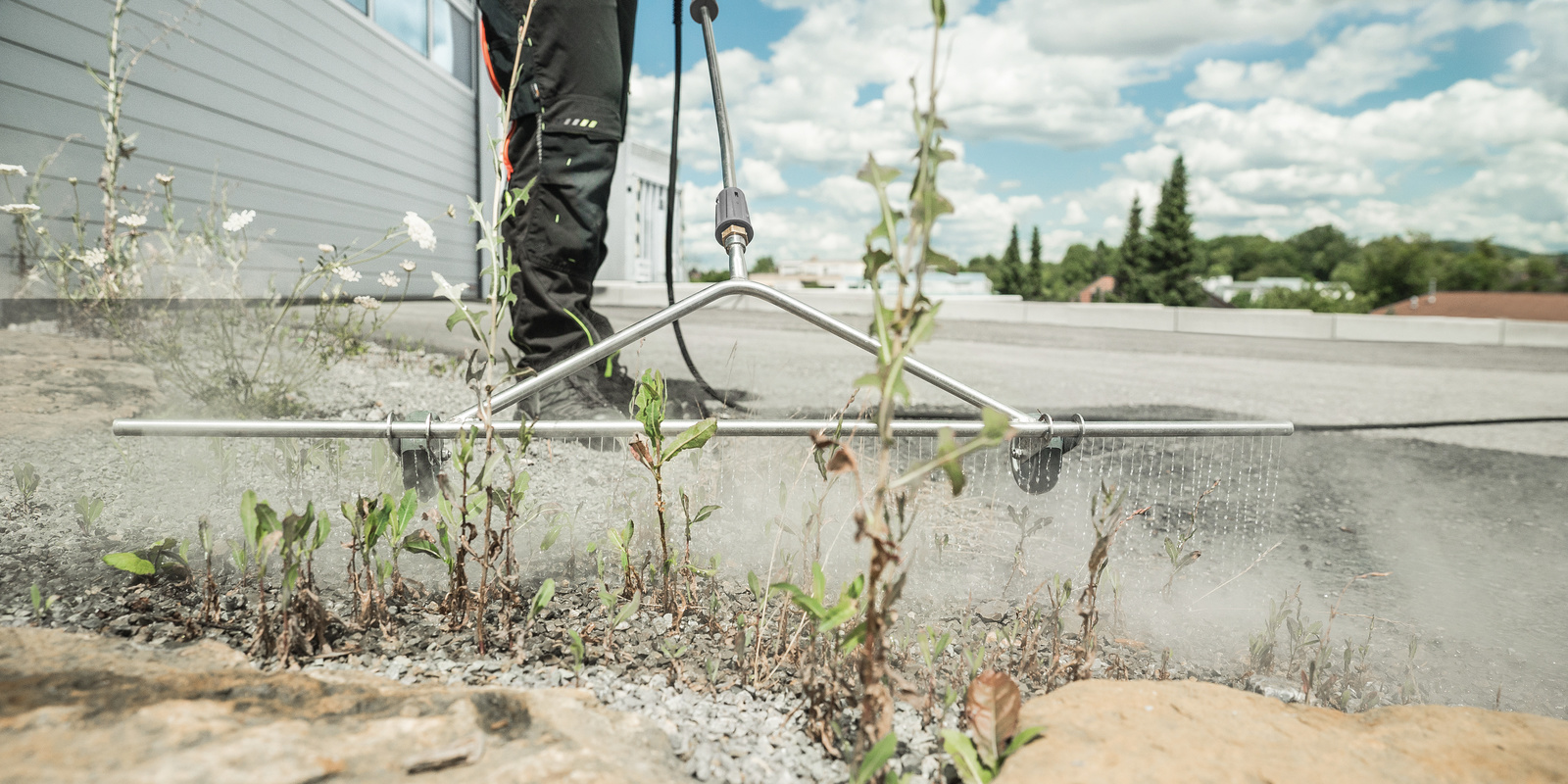
Weed remover WR 100 with chassis, 100 cm wide nozzle bar and integrated nozzle adapter. Ideal for large areas.
Tip: Distance between nozzle bar and surface
The optimal distance between the nozzle bar of the Kärcher weed remover and the surface is between 5 and 15 centimetres. You can work comfortably within this range without the weed remover touching the ground. It also means that the loss of water temperature as the water travels to the surface is minimal.

Topic special "Weed removal with hot water"
In our topic special you will find further information and an overview of the products for weed removal.
You may also be interested in:
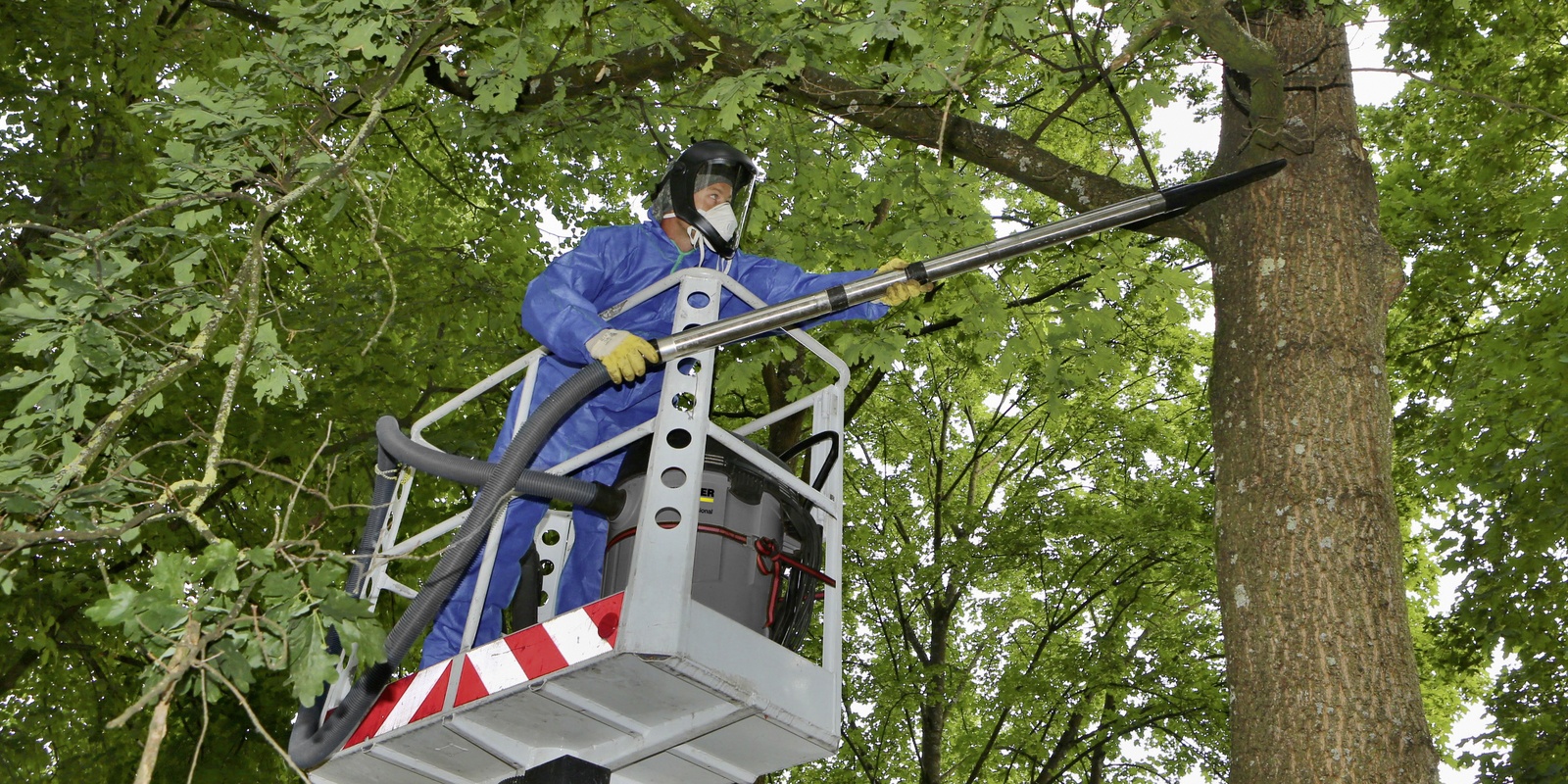
Controlling oak processionary moths in an environmentally friendly manner
For some years now, the oak processionary moth has been on the rise. Where people live, it can become a health risk due to its poisonous stinging hairs. The right approach to tackling the insect is therefore decisive.
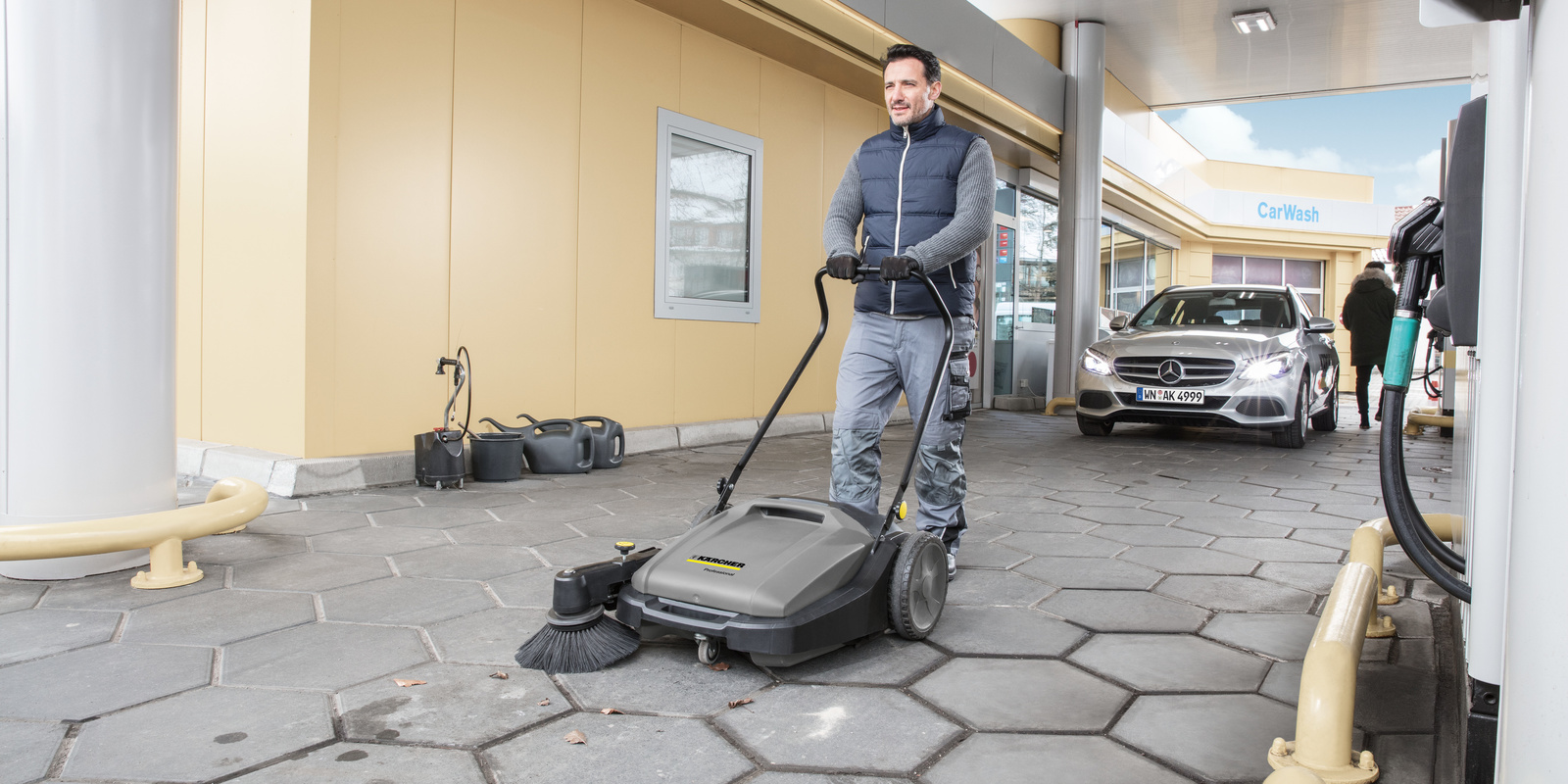
Service station cleaning: Cleanliness from the shop floor to the wash hall
Service stations require cleaning on many fronts. However, anyone who invests in the proper technology finishes the required activities quickly. All that is needed then is a deep cleaning at regular intervals. But those who always keep their equipment and premises clean have significantly less to do.
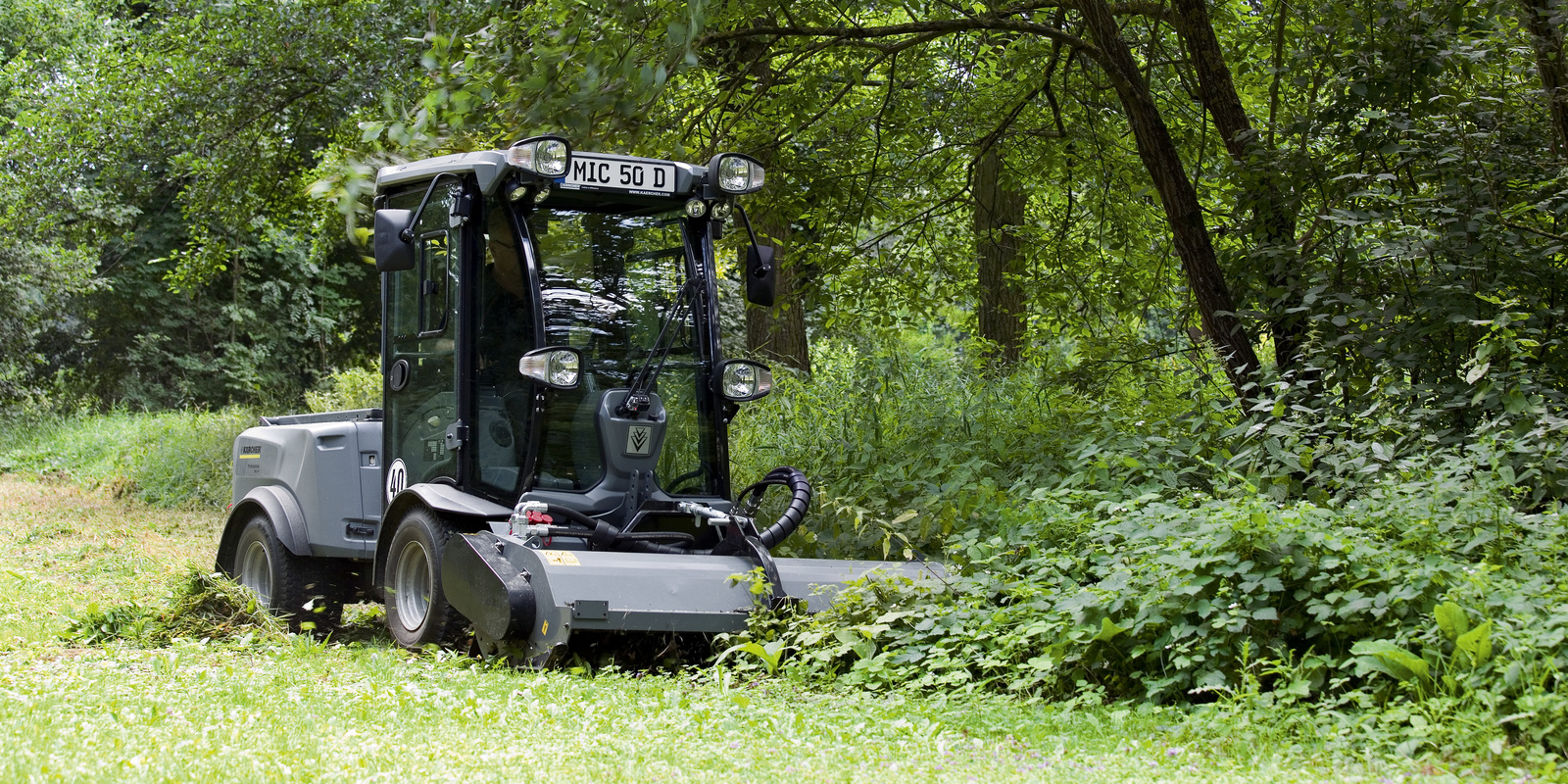
Maintenance of green and outdoor areas
In spring, a mammoth job lies ahead for municipalities: Lawn areas in parks need to be trimmed, weeds removed effectively and paths and parking spaces must be cleared of shrubs, dust and dirt. With expertise and the appropriate equipment it is possible to master the various tasks.

